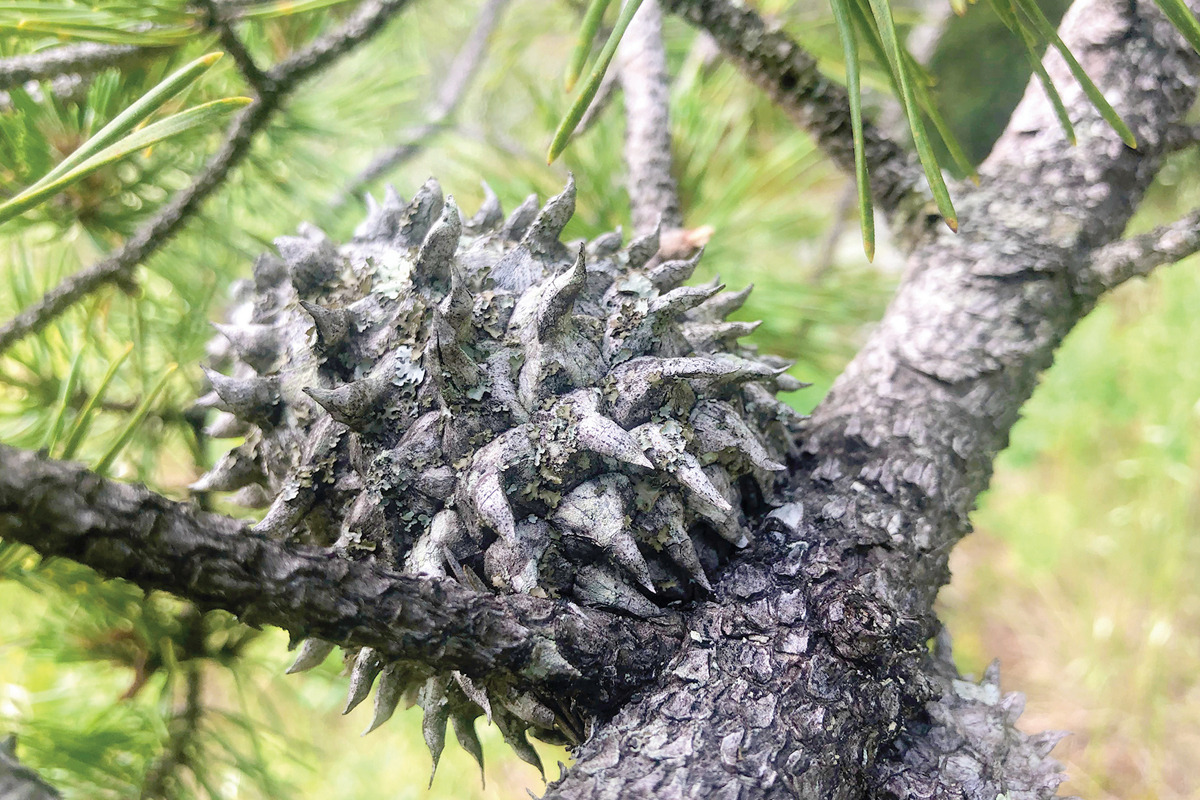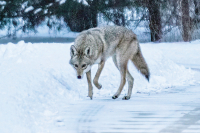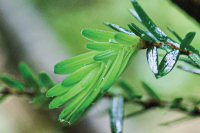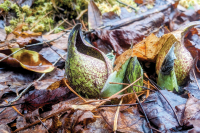Notes from a plant nerd: In the pines
 The large, spikey cones of the Table Mountain pine distinguish it from the four other pine species that grow in the mountain region.
Adam Bigelow photo
The large, spikey cones of the Table Mountain pine distinguish it from the four other pine species that grow in the mountain region.
Adam Bigelow photo
In the Cherokee cosmology, evergreen trees were given their ability to hold onto their leaves all winter as a reward for s taying up all night long for seven days, keeping the sacred fire lit.
Of the many species of trees given this task, only those few that did not nod off during their watch were made evergreen. To this day the needle-like leaves of Eastern red cedar (Juniperus virginiana), red spruce (Picea rubens), Fraser fir (Abies fraseri), holly (Ilex spp.), hemlock (Tsuga spp.), laurels (Rhododendron spp. and Kalmia latifolia) and pines (Pinus spp.) remain on the trees throughout the winter, standing like champions holding up their shiny green trophies for all to see.
Of the eight species of pine that are native to North Carolina, five of them can be found growing in the mountain counties. Those are the Virginia pine (Pinus virginiana), white pine (Pinus strobus), pitch pine (Pinus rigida), shortleaf pine (Pinus echinata), and my favorite, the Table Mountain pine (Pinus pungens). This leaves only the pond pine (Pinus serotina), loblolly pine (Pinus taeda) and longleaf pine (Pinus palustris) for the rest of the state.
Even though longleaf pine is found in fewer than half the counties in N.C., many people believe that this is the state tree of N.C. This is because it is named in the state toast, “Here’s to the land of the longleaf pine …” and is the namesake of the Order of the Longleaf Pine, the highest honor North Carolina’s governor can bestow. It turns out that our state tree is the pine tree, and since there are eight species that are native to the state, the 1963 legislature decided not to choose just one species, but rather to select the whole genus. If there was to be a species that represented all of N.C. it would have to be the shortleaf pine (Pinus echinate), which is documented as growing in 83 of the 100 N.C. counties.
A cluster of pine needles is called a fascicle in botanical terminology. Different species of pine trees can be told apart, in part by the number and arrangement of needle leaves in a fascicle. If you were in 4-H as a child, you might remember their great mnemonic for remembering the difference between white pine and Virginia pine. There are five letters in the word “white,” just as there are 5 needles per fascicle on white pines. Whereas the Virginia pine has two needles, and when you hold up two fingers, they form the “V” that begins the word Virginia.
When you have three needles in some or all of the fascicles, that’s when other clues and features need to come into play, including the needles’ relative length and whether they are twisted or straight on an axis. Shortleaf pine has needle bundles that come in either two or three needles per fascicle and will have both numbers on the same tree. Needles of pitch pine come in bundles of three per fascicle, and the needles twist as they grow, making this tree very distinctive. Pitch pine also exhibits an interesting trait in which clusters of needles will grow right off of the trunk, and not just on branches. This is called epicormic growth, and that word can be applied to leaf growth like in pitch pine, and also to plants that flower directly on the trunk, like redbud (Cercis canadensis).
Related Items
The Table Mountain pine can also have two or three needles per fascicle. What sets this species apart from the other pines found in the mountains is its cones. The pinecones of the Table Mountain pine are heavy and densely sealed shut with wax. They are also barbed with long, stiff, pointed spines that would make these cones dangerous were they to fall off the tree and hit you in the head as you passed under. The seeds contained within these spiky cones are protected from birds and others who would eat them both by spines and waxy sealant.
Table Mountain pine is also called “the lonesome pine” and was venerated in old western movies and country songs. My two favorite trees in the world are a pair of lonesome pines on the outcropping called Tranquility Point on Little Green Mountain in Panthertown Valley. Unlike most of their species, which tend to grow singly as tall scraggly trees, these two grow side by side and have been continuously pruned and stunted by strong winds on the outcropping, creating a pair of natural bonsais. Neither tree is more than 10 feet tall, and both stretch about 40 feet wide. Pinus pungens was also my nickname in horticulture school, because I was tall like a pine tree, and often pungent. Hey, pungent means sharp and to the point, right?
(Adam Bigelow lives in Cullowhee. He leads weekly wildflower walks most Fridays and offers consultations and private group tours through Bigelow’s Botanical Excursions. This email address is being protected from spambots. You need JavaScript enabled to view it..)













